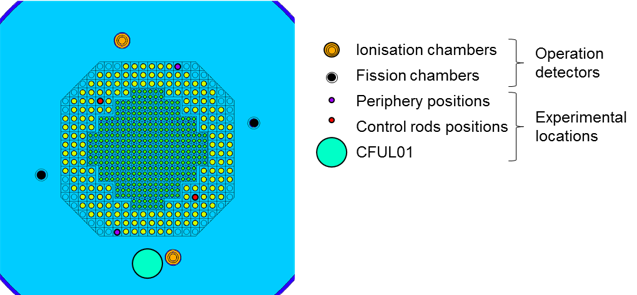Neutron noise measurement techniques were developed in collaboration with swissnuclear and PSI and applied in CROCUS. The acquisition was performed in pulse mode with BF3 detectors and the data stored in multichannel scalers and post-processed to yield the Feynman-α and Power Spectral Density curves. An inherent limitation of the pulse mode acquisition is the dead time of the detector at high count-rate, which set a lower limit on the measurement time. Acquisitions in current mode bypass this limitation by observing the current oscillations around a mean value without isolating each single detection event. The mean current and its variations need to be read with high precisions – typically in the range of 1 nA to 1 μA. Generally the continuous and fluctuating parts of the current are amplified and converted into voltage signals before being analysed, similar to what is performed for the pulse mode acquisitions.

Figure: CROCUS model with considered detector locations for neutron noise measurement in current mode.
A measurement station in current mode was built and tested in the CROCUS reactor. The results were compared with the previous measurements performed in pulse mode. This project takes place in the framework of the PhD thesis of O. Pakari.